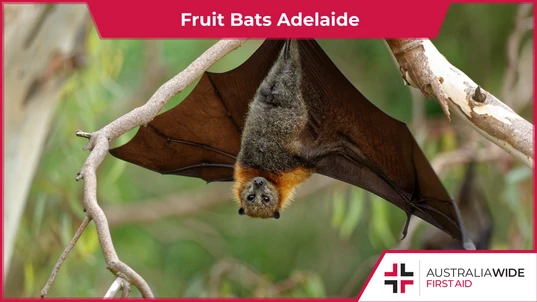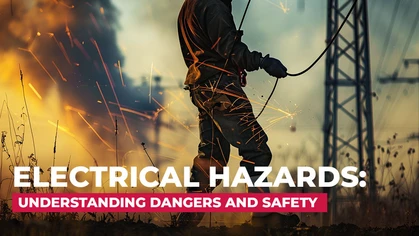Fact Sheet on Fruit Bats - Adelaide

Danger

A relatively new addition to the forest ecosystems of Adelaide, the Grey-headed flying-fox (also known as the fruit bat), is the largest bat species in Australia. They can transmit several deadly diseases, including the Australian bat lyssavirus (ABLV).
Adelaide is home to the Grey-headed flying-fox, the largest bat species in Australia. The Grey-headed flying-fox, also known as the fruit bat, is a relatively new addition to the Adelaide skyline. These large, fluffy night-dwellers set up a permanent camp in the Adelaide Botanic Gardens in 2010, having relocated from Victoria and New South Wales for space and food. Though these fruit bats are harmless in themselves, they are wild animals and can carry viruses even after their death. This is important to note, as fruit bats often perish during periods of extreme heat. As such, in this article, we cover the key characteristics of Adelaide's Grey-headed flying-fox, and what to do if you encounter one. We also cover animal bites in our Adelaide first aid courses: We have training locations in every state, capital city, and major town throughout Australia. Head to our website to find and enrol in a first aid course near you today.Appearance
- Wingspan of over 1 m
- Mostly dark brown body, though with a grey head and an orange collar encircling their neck
Habitat and distribution
The Grey-headed flying fox is widely distributed across Australia's eastern states, from Queensland down to Victoria. They live in groups known as 'camps' to protect themselves from predators, and these camps can be made up of many thousands of animals. And though they have been visiting Adelaide for many decades, they only set up a permanent camp in the city's Botanic Park in 2010. Experts believe that the fruit bats were forced to relocate due to the changing availability of space and food resources due to drought conditions, habitat loss, and the effects of climate change. South Australia's Grey-headed flying-fox population peaked in early 2022 at 33,000, having set up an additional camp near Millicent in the state's south-east region. Their preferred habitat includes:- Urban areas
- Forest and woodlands
- Intertidal mangroves
Behaviour
The Grey-headed flying fox is nocturnal and primarily spends the day roosting upside down in trees. At night, they forage for food, including:- Blossoms and nectar from native trees, especially gum trees
- Native and introduced fruit species, particularly figs
Danger
A highly intelligent and social creature, the Grey-headed flying-fox is non-aggressive and not dangerous in itself. However, they can transmit viruses even after their death, including the Australian bat lyssavirus (ABLV), a disease akin to rabies that has caused three human fatalities in Australia since 1996. Fruit bats struggle with extreme heat, and are often found on pathways and grassed areas during heatwaves, including the lower banks of the River Torrens. You should never attempt to handle bats that you find on the ground, regardless of whether they are dead or injured. Instead, call a wildlife rescue organisation for help, such as: These organisations will subsequently dispatch an appropriately immunised person to collect the bat. It is important to help distressed fruit bats as effectively as possible. Though they form an important part of healthy forest ecosystems, as they pollinate and disperse the seeds of many important tree species, their numbers are currently in decline due to a host of factors, including:- Loss of natural feeding habitats and camp sites, and a greater number of human-bat conflicts
- High juvenile mortality rate due to misadventure and extreme heat
- Legal and illegal destruction of fruit bats eating orchards
Final thoughts
Though a fairly new resident of Adelaide, the Grey-headed flying-fox has made itself at home in various forests throughout the region. Though they, themselves, are not dangerous, they can transmit deadly diseases even after they die. As such, if you come across a fruit bat on the ground, regardless of whether it is dead or in distress, contact an Adelaide bat care organisation for assistance. To learn more about treating and preventing animal bites, enrol in one of our Adelaide general or childcare first aid courses. We have training locations in every state, capital city, and major town throughout Australia. Head to our website to find and enrol in a first aid course near you today.
Originally published at
https://www.australiawidefirstaid.com.au/resources/fruit-bats-adelaide
as part of the Australia Wide First Aid Articles Library









